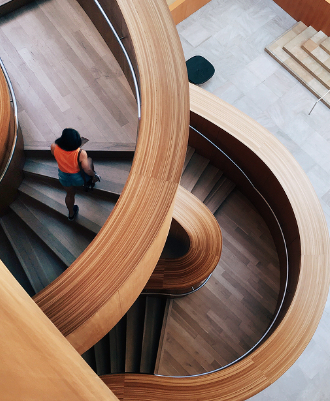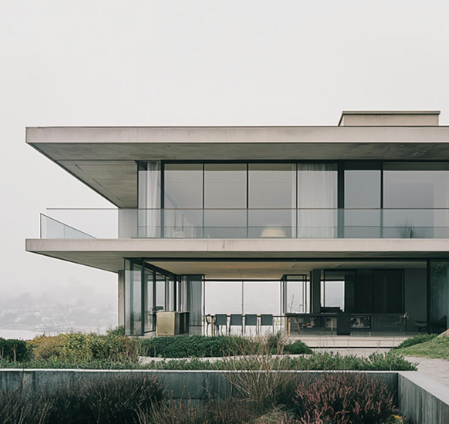Space Planning Interior Design: Room Layout Mastery
 Spazi Design inc
Spazi Design inc
Discover space planning interior design secrets and interior space planning fundamentals. Professional interior design space planning techniques for beautiful, functional homes.
Strategic space planning interior design revolutionizes how families experience their homes by thoughtfully orchestrating room elements to achieve maximum functionality and visual harmony. This comprehensive approach to spatial organization addresses both practical necessities and aesthetic aspirations within residential environments.
Fundamentals of Space Planning Interior Design
Space planning interior design encompasses the art and science of organizing living areas to support human activities while creating pleasing visual compositions. This discipline requires understanding how people navigate spaces, utilize furniture, and perform daily tasks within their home environment.
Effective interior space planning begins with thorough spatial analysis, examining existing architectural features, natural illumination sources, and structural limitations that influence design possibilities. This foundational assessment guides all subsequent decisions regarding furniture selection, placement strategies, and decorative choices.
Contemporary interior design space planning balances classical design theories with modern living requirements, ensuring spaces remain both functionally relevant and aesthetically enduring throughout changing lifestyle trends and family evolution.
Core Components of Interior Space Planning
Successful interior space planning relies on mastering several critical elements:
• Circulation Zones: Design unimpeded movement corridors spanning 40–48 inches for main thoroughfares and 28–32 inches for auxiliary passages, facilitating smooth navigation throughout residential areas.
• Purpose-Driven Areas: Establish dedicated regions for distinct activities including food preparation, entertainment, professional tasks, and personal relaxation while preserving logical spatial relationships.
• Proportional Relationships: Coordinate furniture sizing with room dimensions and architectural scale to maintain visual equilibrium and functional appropriateness throughout your living space.
• Emphasis Points: Develop primary focal elements within each area, such as architectural features, artistic displays, or scenic views that anchor your space planning interior design composition.
Spatial Evaluation and Documentation Methods
Comprehensive assessment supports successful interior design space planning projects:
• Measurement Precision: Calculate room boundaries, vertical clearances, and diagonal spans using professional-grade tools to ensure accuracy throughout your space planning interior design development.
• Utility Location Mapping: Document heating systems, water lines, electrical panels, and load-bearing structures that may restrict furniture positioning or renovation possibilities.
• Digital Visualization: Employ specialized software or mobile applications to generate proportional floor plans enabling experimentation with various configuration alternatives.
• Behavioral Pattern Analysis: Observe family movement routines, activity preferences, and space utilization habits to inform your interior space planning decisions effectively.
Strategic Furniture Selection for Optimal Room Function
Intelligent furniture choices dramatically influence interior design space planning outcomes. Convertible pieces like expandable consoles, nesting tables, and transformable seating maximize spatial efficiency while accommodating varying functional demands throughout different occasions and seasons.
Dimensional compatibility proves essential when selecting items for space planning interior design applications. Verify doorway clearances, stairwell dimensions, and elevator capacities before acquiring substantial pieces to prevent delivery complications and ensure successful installation.
Color temperature affects spatial perception within interior space planning schemes. Cool-toned furnishings enhance feelings of spaciousness and tranquility, while warm-hued pieces create intimacy and comfort. Strategic color distribution can psychologically expand or contract room dimensions according to design objectives.

Illumination Design Within Spatial Frameworks
Lighting orchestration integrates seamlessly with interior design space planning to establish functional, welcoming atmospheres. Daylight variation throughout seasons and daily cycles necessitates adaptable artificial illumination systems that accommodate changing environmental conditions and activity requirements.
Activity-specific lighting supports particular functions within designated zones. Study areas demand concentrated brightness, while social spaces benefit from adjustable atmospheric lighting that establishes appropriate ambiance for various gatherings and occasions.
Integrated lighting elements, including recessed fixtures and linear LED systems, merge harmoniously into space planning interior design while delivering essential illumination without occupying precious floor or surface areas.
Organization Systems and Storage Integration
Comprehensive storage planning represents a fundamental aspect of interior space planning:
• Architectural Integration: Custom millwork, built-in wardrobes, and integrated shelving maximize storage capacity while maintaining design continuity throughout residential spaces.
• Invisible Storage: Furniture featuring hidden compartments, platform beds with drawers, and hollow benches preserve visual clarity while providing practical organization capabilities.
• Accessibility Hierarchy: Position frequently needed items within convenient reach while relegating seasonal or occasional belongings to higher shelves or less accessible storage locations.
• Function-Specific Storage: Each room requires customized storage solutions supporting its primary purposes, from kitchen pantry systems to bedroom armories and office filing arrangements.
Preventing Common Planning Errors
Successful interior space planning requires recognizing typical mistakes:
• Size Misjudgments: Selecting furnishings that overpower or underwhelm room scale creates visual discord and functional challenges throughout living environments.
• Movement Obstruction: Positioning barriers within natural circulation routes forces uncomfortable navigation and diminishes overall spatial comfort.
• Inflexibility: Rigid configurations unable to adapt to evolving needs or occasions limit long-term satisfaction with your space planning interior design investment.
• Illumination Oversight: Insufficient lighting consideration creates shadowed areas and uncomfortable task zones that undermine otherwise successful room arrangements.
Implementation Excellence and Continuous Refinement
Successful interior space planning evolves through careful execution and ongoing optimization. Establish foundational elements first, then gradually incorporate accent pieces and decorative components. This methodical approach enables modifications based on actual living experiences rather than theoretical planning assumptions.
Observe family interaction patterns with arranged spaces over extended periods before implementing permanent alterations. Real-world usage frequently reveals enhancement opportunities invisible during initial interior design space planning sessions.
Professional consultation offers valuable perspective for complex space planning interior design undertakings, especially when addressing structural changes or challenging spatial configurations requiring specialized knowledge and innovative solutions.
Conclusion
Developing interior space planning expertise creates residential environments that elevate daily experiences while showcasing individual design sensibilities. This methodical approach ensures each square foot contributes meaningfully to both practical functionality and aesthetic fulfillment. Whether addressing intimate apartments or generous homes, skilled interior design space planning transforms standard rooms into personalized havens that nurture and motivate inhabitants throughout their evolving life journeys.
Subscribe to my newsletter
Read articles from Spazi Design inc directly inside your inbox. Subscribe to the newsletter, and don't miss out.
Written by

Spazi Design inc
Spazi Design inc
Spazi Design Inc. is more than a design firm—it’s a legacy built on excellence, innovation, and an unwavering commitment to transforming spaces with a seamless blend of design and procurement.